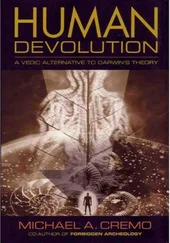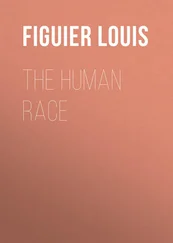Michael Cremo - Forbidden Archeology - The Hidden History of the Human Race
Здесь есть возможность читать онлайн «Michael Cremo - Forbidden Archeology - The Hidden History of the Human Race» весь текст электронной книги совершенно бесплатно (целиком полную версию без сокращений). В некоторых случаях можно слушать аудио, скачать через торрент в формате fb2 и присутствует краткое содержание. Год выпуска: 1992, ISBN: 1992, Издательство: Torchlight Publishing, Жанр: Старинная литература, на английском языке. Описание произведения, (предисловие) а так же отзывы посетителей доступны на портале библиотеки ЛибКат.
- Название:Forbidden Archeology: The Hidden History of the Human Race
- Автор:
- Издательство:Torchlight Publishing
- Жанр:
- Год:1992
- ISBN:9780892132942
- Рейтинг книги:4 / 5. Голосов: 1
-
Избранное:Добавить в избранное
- Отзывы:
-
Ваша оценка:
- 80
- 1
- 2
- 3
- 4
- 5
Forbidden Archeology: The Hidden History of the Human Race: краткое содержание, описание и аннотация
Предлагаем к чтению аннотацию, описание, краткое содержание или предисловие (зависит от того, что написал сам автор книги «Forbidden Archeology: The Hidden History of the Human Race»). Если вы не нашли необходимую информацию о книге — напишите в комментариях, мы постараемся отыскать её.
Forbidden Archeology: The Hidden History of the Human Race — читать онлайн бесплатно полную книгу (весь текст) целиком
Ниже представлен текст книги, разбитый по страницам. Система сохранения места последней прочитанной страницы, позволяет с удобством читать онлайн бесплатно книгу «Forbidden Archeology: The Hidden History of the Human Race», без необходимости каждый раз заново искать на чём Вы остановились. Поставьте закладку, и сможете в любой момент перейти на страницу, на которой закончили чтение.
Интервал:
Закладка:
De Mortillet had his own ideas about the cause of the marks on the fossil bones of St. Prest. Some authorities had suggested glaciers had been responsible for the markings. But de Mortillet said that glaciers had not reached that particular region of France. Modern authorities (Nilsson 1983, p. 169) agree on this point—the extreme southern limit of the North European glaciation passed through the Netherlands and Central Germany. De Mortillet also rejected human action as the cause of the marks on the bones.
The key to understanding the marks, according to de Mortillet, could be found in the statement by Desnoyers that they appeared to have been made by a sharp blade of flint. According to de Mortillet (1883, pp. 45–46), that was true, only the flint, instead of being moved by the hand of man, had been moved by natural force—a very strong underground pressure that caused the sharp flints to slide across the bones with force sufficient to cut them. As evidence, de Mortillet cited the fact that he had observed flints from the St. Prest gravels and elsewhere that displayed on their surfaces deep scratches. At this point it should be mentioned that in Le Préhistorique de Mortillet rejected every single one of the many discoveries of incised bones made up to that time, almost always offering the same explanation—that the marks were caused by sharp stones moved by subterranean geological pressures.
But in the case of the St. Prest bones, Desnoyers (1863, p. 1201) responded to de Mortillet’s objections, observing: “many of the incisions have been worn by later rubbing, resulting from transport or movement of the bones in the midst of the sands and gravels. The resulting markings are of an essentially different character than the original marks and striations, and offer superabundant proof of their different ages.” In other words, marks from subterranean pressure may indeed be found upon the bones, but, according to Desnoyers, they can be clearly distinguished from the earlier marks attributed to human action.
So who was right, Desnoyers or de Mortillet? Some authorities believed the question could be settled if it could be demonstrated that the gravels of St. Prest contained flint tools that were definitely of human manufacture. This same demand—for the tools that made the marks—is often made today in cases of anomalous discoveries of incised bones (Section 2.3). The Abbé Bourgeois, a clergyman who had also earned a reputation as a distinguished paleontologist, carefully searched the strata at St. Prest for such evidence. By his patient research he eventually found a number of flints that he believed were genuine tools and made them the subject of a report to the Academy of Sciences in January 1867 (de Mortillet 1883, p. 46). Even this did not satisfy de Mortillet (1883, pp. 46–47), who said of the flints discovered by Bourgeois at St. Prest: “Many others that he found there, and which are now deposited in the collection of the School of Anthropology, do not have conclusive traces of human work. The slidings and pressures that resulted in striations on the surfaces of the flints have also left on their sharp edges a number of chips that greatly resemble retouching by humans. This is what deceived Bourgeois. In effect, of the flints discovered at St. Prest, many present a false appearance of having been worked.”
It appears that in our attempt to answer one question, the nature of cut marks on bones, we have stumbled upon another, the question of how to recognize human workmanship on flints and other stone objects. This latter question shall be fully treated in the next chapter. For now we shall simply note that judgements about what constitutes a stone tool are a matter of considerable controversy even to this day. It is, therefore, quite definitely possible to find reasons to question de Mortillet’s rejection of the flints found by Bourgeois. Certainly, the bare observation that some of the flints collected by Bourgeois did not, in de Mortillet’s opinion, show signs of human work does not change the fact that others, however few, did in fact show such signs. And the presence of stone tools at St. Prest would satisfy a key demand for the verification of intentional cuts on fossil bones found there.
The famous American paleontologist Henry Fairfield Osborn (1910, p. 399) made these interesting remarks in connection with the presence of stone tools at St. Prest: “the earliest traces of man in beds of this age [Early Pleistocene by his estimation] were the incised bones discovered by Desnoyers at St. Prest near Chartres in 1863. Doubt as to the artificial character of these incisions has been removed by the recent explorations of Laville and Rutot, which resulted in the discovery of eolithic flints, fully confirming the discoveries of the Abbé Bourgeois in these deposits in 1867.”
So as far as the discoveries at St. Prest are concerned, it should now be apparent that we are dealing with paleontological problems that cannot be quickly or easily resolved. Certainly there is not sufficient reason to categorically reject these bones as evidence for a human presence in the Pliocene. This might lead one to wonder why the St. Prest fossils, and others like them, are almost never mentioned in textbooks on human evolution, except in rare cases of brief mocking footnotes of dismissal. Is it really because the evidence is clearly inadmissible?
Or is, perhaps, the omission or summary rejection more related to the fact that the potential Late Pliocene antiquity of the objects is so much at odds with the standard account of human origins? In theory, scientists proclaim themselves ready to follow the facts wherever they might lead. But in practice, the social mechanisms of the scientific community set limits beyond which its members in good standing may cross only at their peril. When eminent authorities announce their rejection of certain categories of evidence, others hesitate to mention similar evidence out of fear of ridicule. Thus anomalous evidence gradually slides from disrepute into complete oblivion.
Along these lines, Armand de Quatrefages, a member of the French Academy of Sciences and a professor at the Museum of Natural History in Paris, wrote in his book Hommes Fossiles et Hommes Sauvages (1884, p. 90): “The objections made to the existence of humans in the Pliocene and Miocene periods seem to habitually be more related to theoretical considerations than to direct observation.” De Quatrefages (1884, p. 91) further stated: “The existence of man in the Secondary epoch is not at all contrary to the principles of science, and the same is true of Tertiary man.”
This is quite a shocking statement, considering that the most recent Secondary period is the Cretaceous, which ended approximately 65 million years ago. Supposedly, only very small and primitive mammals existed in the Cretaceous, dodging the last of the dinosaurs. Evidence for human beings in the Cretaceous would most certainly cast a great thundering cloud of doubt over Darwin’s seemingly invincible hypothesis. But for now, our focus is on the more recent Tertiary epoch. Even if anatomically modern human beings were found to have existed in the latest Pliocene, at a mere 2 million years ago, that would still call into question the evolutionary picture of human origins.
In Hommes Fossiles et Hommes Sauvages, de Quatrefages gave a summary of the evidence for his assertions about humans existing in the very distant past and then stated (1884, p. 96): “The preceding historical samples are incomplete and abbreviated. But they suffice, I believe, to make comprehensible that the conviction, agreed upon by many modern scientists of diverse disciplines, relative to the existence of Tertiary man, is not formed lightly but is the result of serious and repeated study.”
Concerning the presence of ancient man at St. Prest, de Quatrefages (1884, pp. 89–90) wrote: “Mr. Desnoyers has affirmed his existence, based on the examination of incisions manifestly intentional found on the bones of Elephas meridionalis and other great mammals of the same age. This discovery was greatly contested, by among others Lyell, who declared he was not able to accept that the incisions on the bones were demonstrably the work of man until he could be shown the instruments that did it. The Abbé Bourgeois responded to this desire. But 20 years later, de Mortillet, in opposing all the results of this research, simply raises objections which when made the object of attentive study turn out to have little foundation.”
Читать дальшеИнтервал:
Закладка:
Похожие книги на «Forbidden Archeology: The Hidden History of the Human Race»
Представляем Вашему вниманию похожие книги на «Forbidden Archeology: The Hidden History of the Human Race» списком для выбора. Мы отобрали схожую по названию и смыслу литературу в надежде предоставить читателям больше вариантов отыскать новые, интересные, ещё непрочитанные произведения.
Обсуждение, отзывы о книге «Forbidden Archeology: The Hidden History of the Human Race» и просто собственные мнения читателей. Оставьте ваши комментарии, напишите, что Вы думаете о произведении, его смысле или главных героях. Укажите что конкретно понравилось, а что нет, и почему Вы так считаете.












